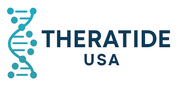Product Overview
What is TB-500 (Thymosin Beta-4)?
TB-500 is a synthetic version of the naturally occurring peptide Thymosin Beta-4, present in virtually all human and animal cells. It plays a critical role in tissue repair, angiogenesis, and cell migration by interacting with actin in the cytoskeleton. TB-500 promotes wound healing, muscle growth, and recovery by accelerating keratinocyte and endothelial cell migration and reducing inflammation.
TB-500 (Thymosin Beta-4) Structure
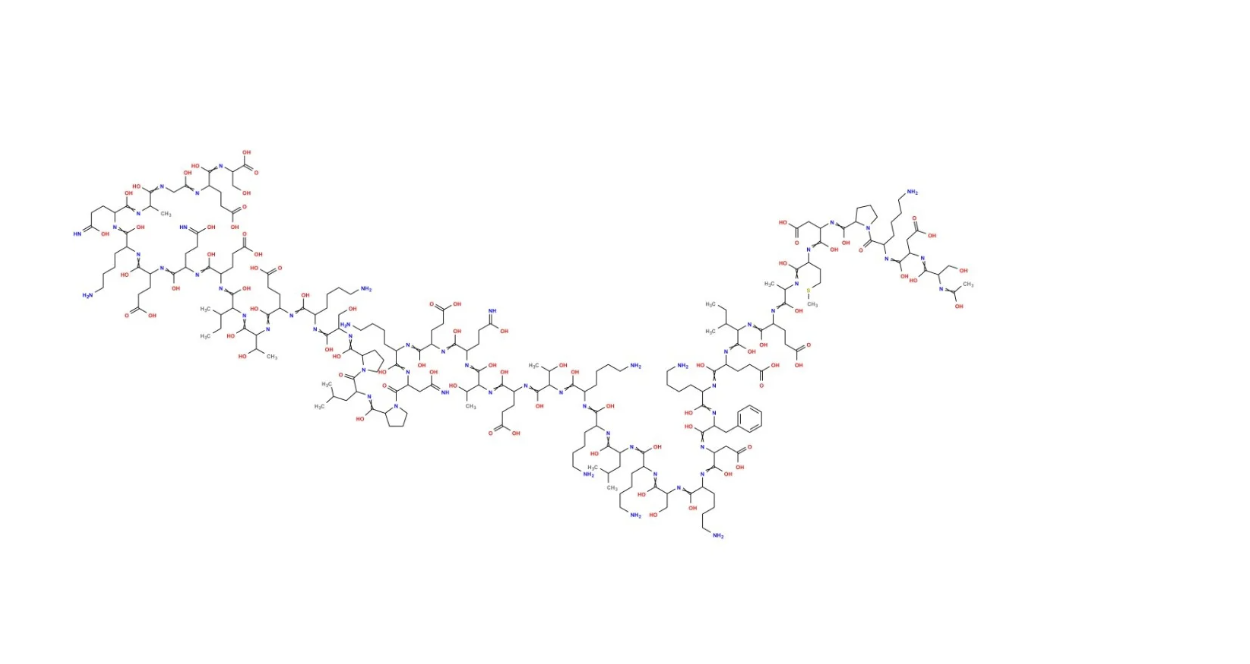
Sequence: Ac-Ser-Asp-Lys-Pro-Asp-Met-Ala-Glu-Ile-Glu-Lys-Phe-Asp-Lys-Ser-Lys-Leu-Lys-Lys-Thr-Glu-Thr-Gln-Gln-Glu-Lys-Asn-Pro-Leu-Pro-Ser-Lys-Glu-Thr-Ile-Glu-Gln-Glu-Lys-Gln-Ala-Gly-Glu-Ser
Molecular Formula: C212H350N56O78S
Molecular Weight: 4963.44 g/mol
CAS Number: 77591-33-4
PubChem CID: 16132341
Synonyms: Thymosin Beta 4
Effects of TB-500 Demonstrated In Recent Studies
- Endothelial (blood vessel) cell differentiation
- Angiogenesis (growth of new blood vessels)
- Keratinocyte migration
- Collagen deposition
- Decreases inflammation of tissue in joints
- Increases muscle growth, endurance, and strength
- Relaxes muscle spasms and improves tone
- Encourages tissue repair and flexibility
- Prevents adhesions and fibrous bands in muscles, tendons, and ligaments
Disclaimer
ALL ARTICLES AND PRODUCT INFORMATION PROVIDED ON THIS WEBSITE ARE FOR INFORMATIONAL AND EDUCATIONAL PURPOSES ONLY.
The products offered on this website are furnished for in-vitro studies only. In-vitro studies (Latin: in glass) are performed outside of the body. These products are not medicines or drugs and have not been approved by the FDA to prevent, treat, or cure any medical condition, ailment, or disease. Bodily introduction of any kind into humans or animals is strictly forbidden by law.
COA
Below are the Certificates of Analysis confirming the purity and quality of our TB-500:
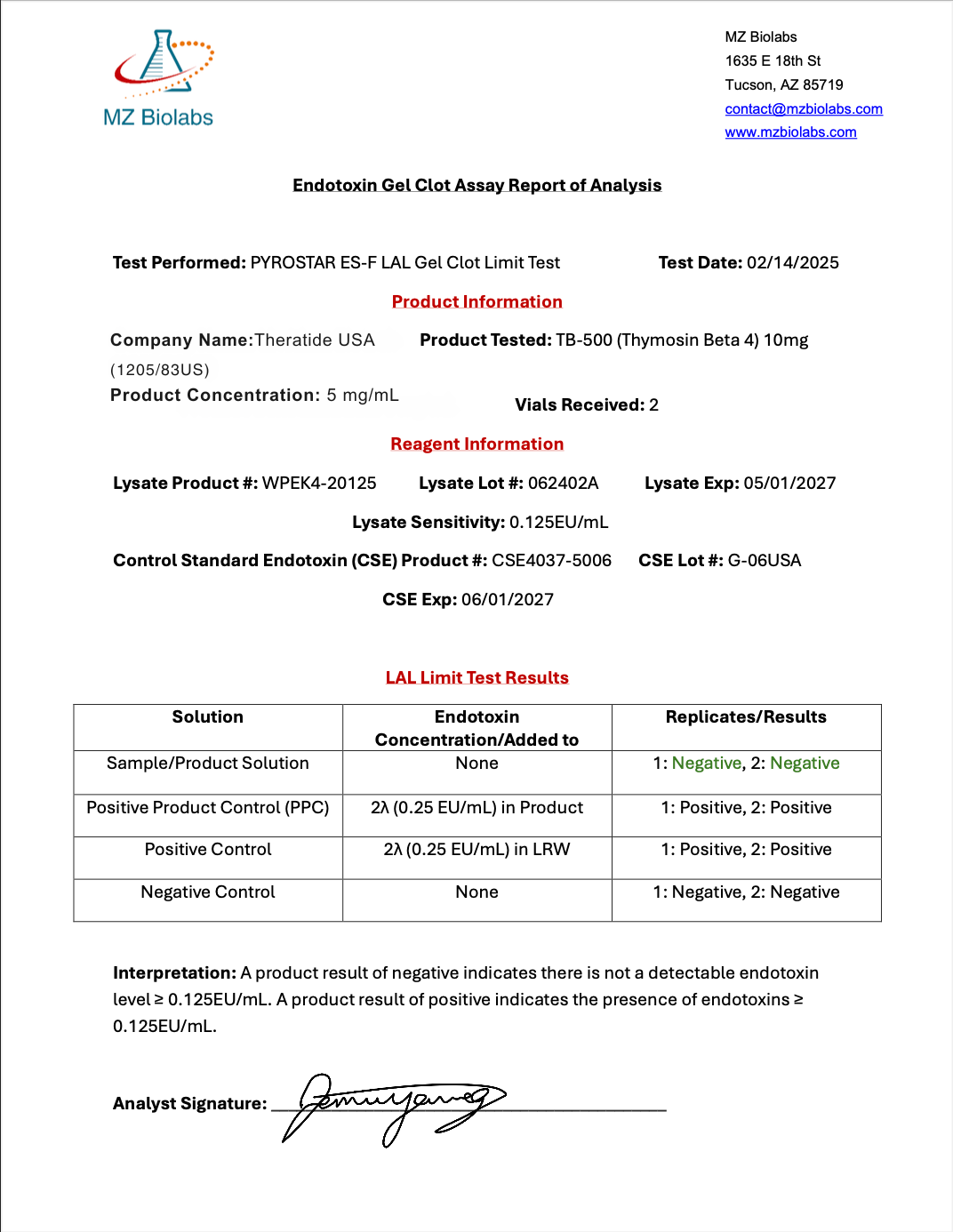
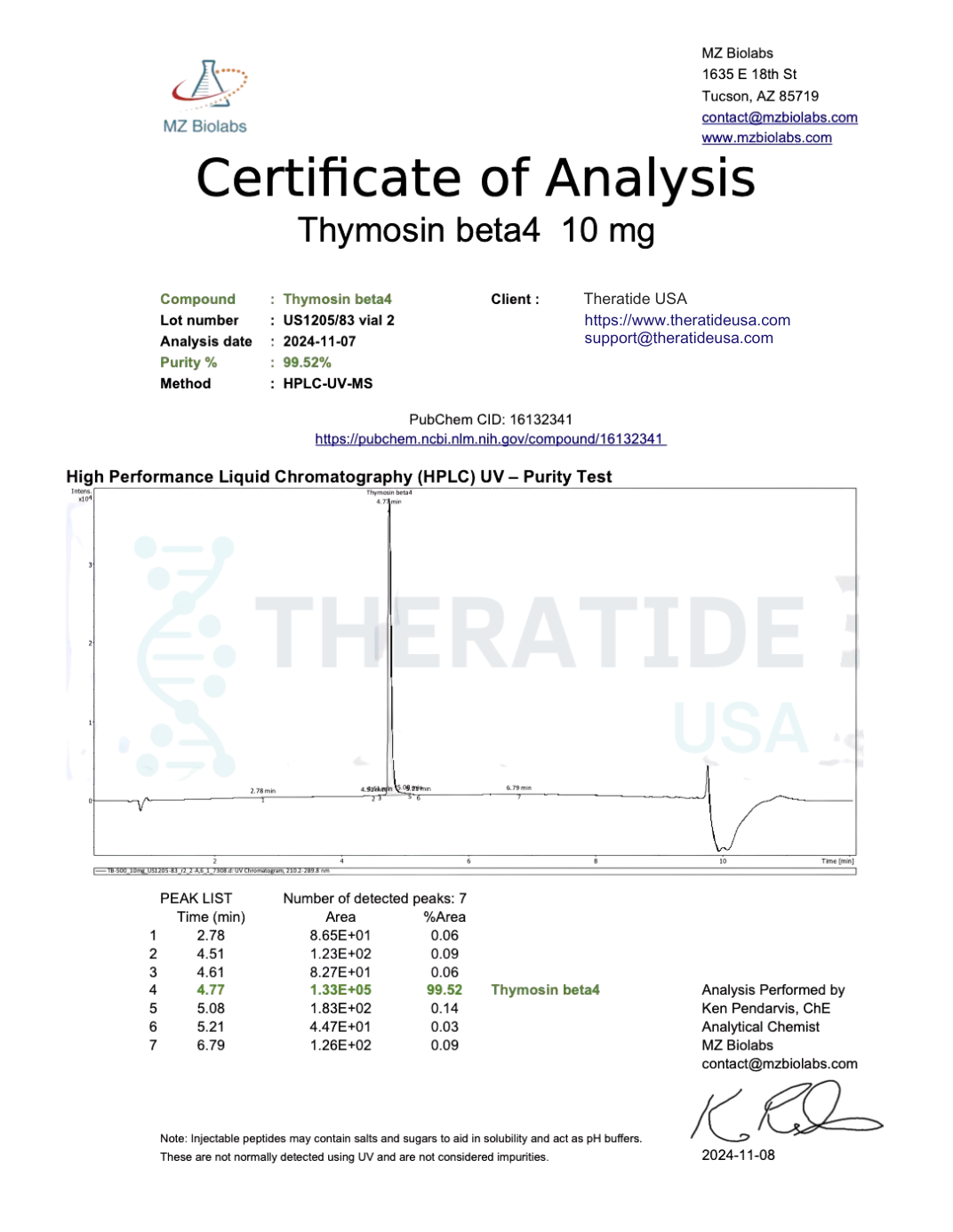
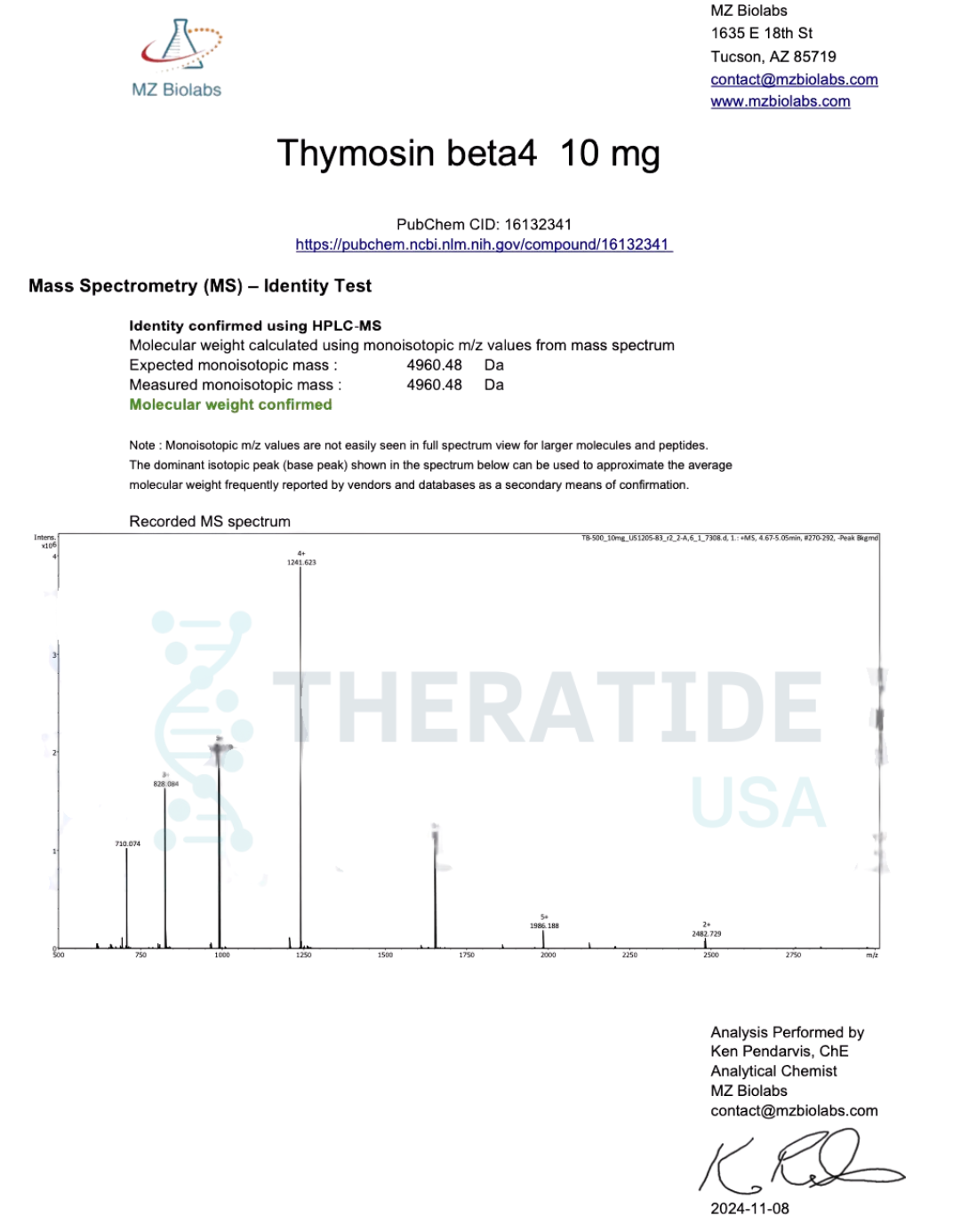
Storage Instructions
All of our products are manufactured using the Lyophilization (Freeze Drying) process, which ensures that our products remain 100% stable for shipping for up to 3–4 months.
Once the peptides are reconstituted (mixed with bacteriostatic water), they must be stored in the refrigerator to maintain stability. After reconstitution, the peptides will remain stable for up to 30 days.
Lyophilization is a unique dehydration process, also known as cryodesiccation, where the peptides are frozen and then subjected to low pressure. This causes the water in the peptide vial to sublimate directly from solid to gas, leaving behind a stable, crystalline white structure known as lyophilized peptide. The puffy white powder can be stored at room temperature until you're ready to reconstitute it with bacteriostatic water.
Once peptides have been received, it is imperative that they are kept cold and away from light. If the peptides will be used immediately, or in the next several days, weeks, or months, short-term refrigeration under 4°C (39°F) is generally acceptable. Lyophilized peptides are usually stable at room temperatures for several weeks or more, so if they will be utilized within weeks or months, such storage is typically adequate.
For longer-term storage (several months to years), it is preferable to store peptides in a freezer at -80°C (-112°F). When storing peptides for months or even years, freezing is optimal to preserve the peptide’s stability.
For further information on proper storage techniques, click the link below:
